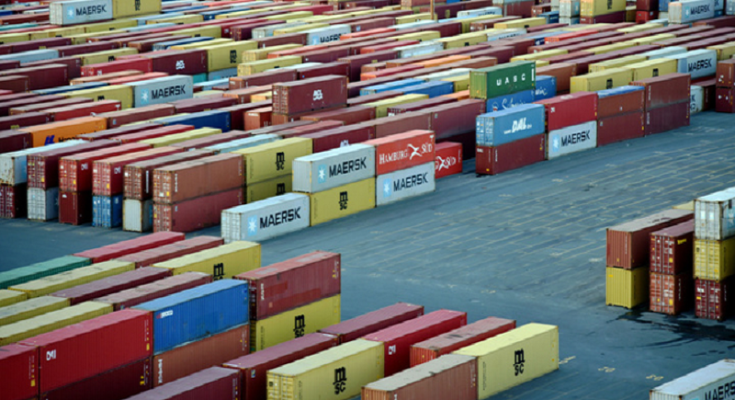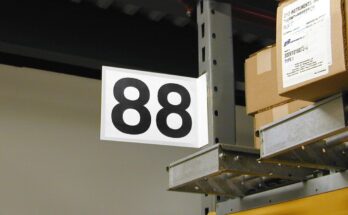A container’s journey through the supply chain is long, with numerous milestones. Without knowing container status, condition, or ETA, shippers are left in a position of being unable to manage exceptions or inform customers. Fortunately, container tracking has removed the veil that once clouded shipments. With tech-enabled container tracking, shippers can build the resilience they need to successfully navigate a dynamic supply chain.
The pandemic exposed critical flaws in the supply chain: disruptions were constant, shippers were often in the dark, and responding to the daily onslaught of exceptions seemed nearly impossible. Resilience was non-existent, leaving shippers looking for new solutions to bring their supply chains under control. With improved resilience through tech-enabled container tracking, shippers can prepare for the unexpected, respond to and manage disruptions, and maintain operational continuity.
WIth the pandemic over, shippers are continuing to turn to container tracking as an invaluable source of supply chain resilience. With growth-minded shippers in mind, we’re digging into three container tracking strategies for shippers to build unprecedented resilience in a volatile supply chain.
Strategy 1: Go Beyond the Blue Dot
Real-time container tracking keeps shippers informed and ahead of the game, helping them build much-needed supply chain resilience. While this is a good start, container tracking needs to be more than a blue dot on a map to be effective. Today’s shippers need more information to keep their supply chains under control.
Integration of advanced technologies like the Internet of Things (IoT), GPS, and Radio Frequency ID (RFID) tags up the information game. Shippers have access to real-time container monitoring to analyze container health, avoid resource contention, and see metrics from all containers over periods of time to examine potential areas of concern.
With total real-time visibility, proactive issue resolution becomes possible when potential bottlenecks and exceptions can be seen before they happen. Delays are reduced as containers become manageable, meeting the needs of demanding customers and improving customer satisfaction.
Advanced real-time tracking pushes alerts at specific and standardized milestones, letting all supply chain stakeholders know the state of their cargo. Last-free date alerts, port and terminal events notifications, and pickup alerts help shippers avoid demurrage and detention fees and keep their freight moving efficiently.
All of this comes together to result in shippers saving money, saving time, meeting their ETAs, and delighting their customers. They realize the benefits of supply chain resilience.
Strategy 2: Invest in Actionable Analytics
The ability to see freight movements and standardized milestone events creates analyzable data that becomes actionable. Shippers utilize analytics to understand past effectiveness and obstacles to foster predictive insights.
Machine learning and artificial intelligence (AI) algorithms empower shippers with the power to forecast demand, optimize their routes, and mitigate risks. Advanced analytics compile hundreds of thousands of data points, discern essential insights, and help shippers understand how well they meet their KPIs.
According to McKinsey & Company’s report, “A More Resilient Supply Chain From Optimized Operations Planning”:
“In recent years, approaches that use data and analytics to identify answers and make recommendations to specific business problems have proved to be particularly relevant in bringing clarity to operations planning and thus improving supply chain resilience. However, the vast majority of companies have yet to implement such approaches in their supply chain, leaving a serious gap in their planning capabilities.”
As companies grow, they keep their supply chains resilient with analytics capabilities that grow with them. A scalable solution isn’t constrained by data processes developed at one stage of the business but didn’t anticipate the next stage. When the solution is scalable, with data enrichment add-ons that may be utilized when the needs of the shipper change, the company is prepared not just for growth but for any supply chain disruptions, like the next pandemic.
Strategy 3: Optimize for Integration
Supply chains aren’t just complex due to potential events. They must also account for the number of stakeholders with vested interests in the container’s movements. Efficient collaboration is crucial to operational effectiveness, and any process that improves communication and integration while reducing time commitment or communication errors is a competitive advantage.
The power to share container tracking information with suppliers, partners, and customers promotes efficient collaboration. Everyone is kept in the loop without making calls and relaying what might have been learned too late without a real-time tracking solution. Everyone knows the ETA, where the freight is, and any changes in schedule or exception events.
Digital platforms and APIs push status information and standardized container events where it needs to be to keep stakeholders in the loop. APIs deliver instant on tracking events to any software system or spreadsheet to ensure organizations have information across dependent departments. The result is seamless collaboration and information sharing.
With the Right Partner, a Better Supply Chain Is Only a Click Away
Real-time container tracking empowers both reactive and proactive supply chain management strategies. Shippers see freight events as they happen when in transit and immediately tackle the unpredictable. The data accumulated during the container’s movements are analyzed and used to predict future events or change strategies as needed.
Shippers react immediately to their supply chain and then analyze its performance to revise future strategies.
Like all supply chain management technology, these innovations are only as effective as the provider through which they are accessed, making the choice of container tracking partner crucial. The tech provider must value data effectiveness, usability, and collaboration value.Without the right provider, shippers are left in the dark on high-stakes container shipments.
Make Your Supply Chain Resilient With Real-Time Container Tracking From Vizion API
Shippers have seen the volatility within their supply chain and want control. Instead of their freight disappearing into a void or only being a blue dot on a map, savvy shippers:
- Go beyond the blue dot
- Leverage actionable analytics
- Optimize for collaboration and integration
Using real-time container tracking from a valued tech partner empowers shippers to react effectively in real-time and proactive through tech-enabled analytics. They realize optimal collaboration and communication with other supply chain stakeholders, keep freight movements on time, and save money.
Shippers yet to utilize tech to advance their freight operations are falling behind and yielding a competitive advantage to others in their sector. It’s time to transform their operations and prepare for future supply chain disruptions.
Shippers use container tracking to realize supply chain resiliency that grows and changes with their operations.
Vizion API is a trusted provider of container tracking with an API that easily integrates with shippers’ existing tech stack. Shippers use Vizion API to go beyond the blue dot, leverage actionable analytics, and optimize their collaboration and integration.
Book a demo with Vizion API today to build your supply chain resiliency.




